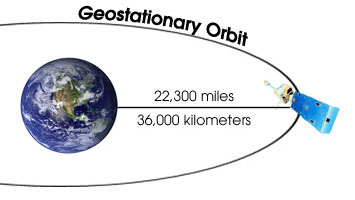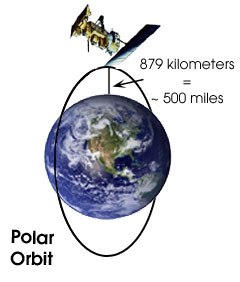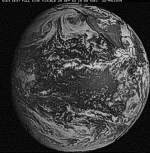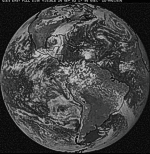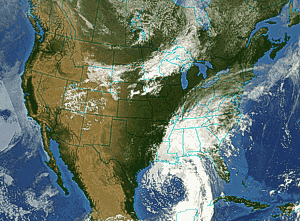
Weather Satellites The first forecasting tool we'll cover are images provided by weather satellites. A satellite is an object that orbits a larger object, like a planet. The earth’s moon is an example of a natural satellite; weather satellites are the result of human invention. The same forces that hold satellites in their orbits around the Earth keep planets in their orbits around the sun. There are two main types of weather satellites, defined by their orbits around the Earth.
|
|||||||
The United States
operates two GOES weather satellites, one over
the East Coast and one over the West Coast. They have overlapping coverage
in the central
United
States. Here are the views from each satellite.
Be sure to click on these images to make them bigger.
|
